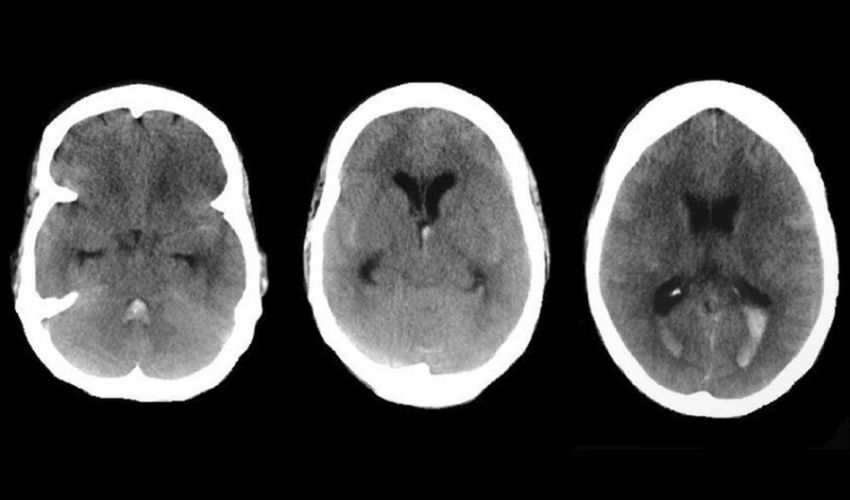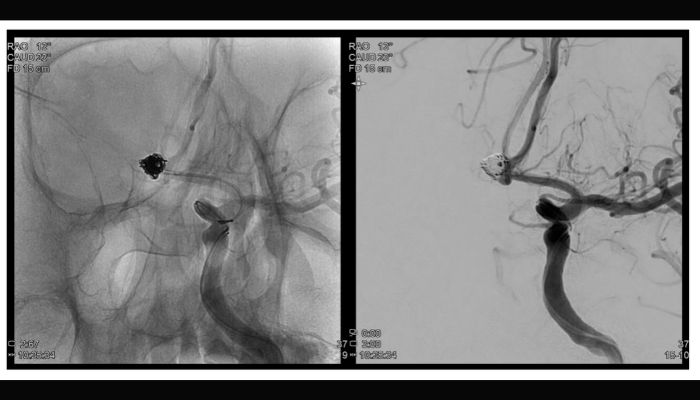Could 3D Printing Be Used to Treat Brain Aneurysms?

When it comes to medical issues, very little can be as scary as those affecting the brain. This is especially the case for brain aneurysms. Defined by the Mayo Clinic as a bulge or ballooning in a blood vessel in the brain, brain aneurysms often show no symptoms and are only detected when they burst, something that is fatal in about 50% of cases and which can cause permanent neurological deficits in survivors. Moreover, treatment can be difficult and is not always effective. However, researchers at the University of Oklahoma hope to use 3D printing to improve brain aneurysm medical care.
The five-year project is being led by Chung-Hao Lee, an associate professor at the Gallogly College of Engineering. He will be working with Yingtao Liu, Ph.D., William H. Barkow Presidential Professor and associate professor in the Gallogly College of Engineering at OU; Bradley N. Bohnstedt, M.D., a neurosurgeon at Indiana University School of Medicine; and Hyowon Lee, Ph.D., a biomedical engineer at Purdue University. The goal of the project is to better treat subarachnoid hemorrhages, or bleeding occurring in between the brain and the surrounding membrane.

Chung-Hao Lee, Ph.D. (right), and Yingtao Liu, Ph.D. who are working on this project (photo credits: University of Oklahoma)
Currently, there are two treatments that are used to treat brain aneurysms. One is surgical clip litigation which is risky since its involves open-skull surgery. The other is the current “gold standard” treatment and is called endovascular coil embolization. Essentially, in this minimally evasive surgery, a catheter deliver soft coils to prevent the flow of blood into the affected blood vessel. This helps to keep it from rupturing.
However, this treatment still has its limitations. Lee, explained, “The driving problem is even with this technique, due to the complexity of the shape, size or the geometry of the aneurysm, is that there is a heightened risk of recurrence. It’s possible that five or six years after initial embolization, 20-25% of the patients will develop the same issue again. So, it’s increasing the corresponding health care burden and may also lead to poor prognosis and even the mortality for the patient.” The solution for him is customized devices made via 3D printing which will limit the possibility of developing the same issue over time.

The current gold standard treatment is endovascular coil embolization but it is not without its limitations. Pictured above, an aneuyrsm (right) and the aneurysm after it was embolized (photo credits: Veterans Health Service Medical Center, South Korea)
Using 3D Printed Devices to Treat Brain Aneurysms
Since the project is still in its early stages, there is currently no information on which 3D printing processes will be used or even what these devices will look like. However, the researchers note that they will be using advanced biomedical 3D printing in order to create unique, customized devices that are tailored to the specific geometrical shape, size and location of an aneurysm. As our readers probably know, this is indeed one of the key benefits of using additive manufacturing in medicine, the ability to completely adapt each device to each patient’s needs. And considering that the fact that the inability to do this currently in treatment is what leads to recurrence, it will certainly be interesting to see how 3D printing will be able to help overall in the treatment of this type of brain aneurysm.
Lee concludes, “The overall clinical and translational benefits of our project will be to prevent aneurysm rupture and its induced strokes, which accounts for roughly 15% of the new strokes every year, and to decrease the 20% rate of failed cases from the current gold standard. This is an extremely promising area to drive the clinical field forward.” In any case, it will be exciting to see how this project develops and we will be sure to keep you all updated! You can learn more in the press release HERE.
What do you think of the use of 3D printing to help treat brain aneurysms? Let us know in a comment below or on our LinkedIn, Facebook, and Twitter pages! Don’t forget to sign up for our free weekly Newsletter here, the latest 3D printing news straight to your inbox! You can also find all our videos on our YouTube channel.
*Cover Photo Credits: David C. Preston/Case Western Reserve University








After having a subarachnoid hemorrhage in 2020, I think a 3D approach would be amazing. I wish these researchers success!